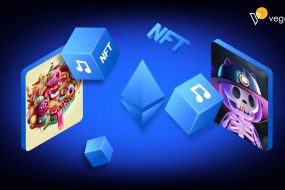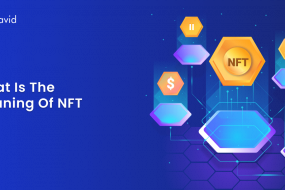
The NFT market is booming, with new marketplaces emerging constantly. But standing out in this crowded space requires more than just offering a platform for buying and selling digital assets. To truly thrive, you need to cultivate a vibrant community, foster trust, and provide a seamless user experience.
1. Building a Strong Foundation
To stay ahead of the competition, successful NFT Marketplace Business Model continually innovate and adopt cutting-edge technologies. This may include integrating blockchain advancements, implementing smart contract functionality, exploring new token standards, and leveraging emerging trends such as decentralized finance (DeFi). By embracing innovation, a marketplace can attract tech-savvy users and position itself as a leader in the industry.
- Clearly define your niche: Target a specific audience or category of NFTs to attract a focused community.
- Prioritize security: Implement robust security measures to protect user assets and data. Utilize smart contracts with reputable audits and secure storage solutions.
- Embrace transparency: Be transparent about fees, moderation policies, and decision-making processes.
- Ensure compliance: Follow relevant regulations and guidelines to avoid legal and reputational risks.
2. Cultivating a Thriving Community
Building a vibrant and engaged community around the marketplace is crucial for its success. This involves fostering communication, interaction, and collaboration among users, including artists, collectors, investors, and enthusiasts. Features such as forums, chat rooms, social media integration, and community events can help cultivate a sense of belonging and encourage active participation within the ecosystem.
- Foster user engagement: Implement features like forums, social media integration, and interactive events to encourage interaction and build relationships.
- Empower creators: Offer tools and resources to support artists, musicians, and other creators, making it easy for them to mint, manage, and showcase their work.
- Reward early adopters: Implement loyalty programs and incentives to attract and retain users during the initial growth phase.
- Build trust and collaboration: Encourage open communication, address user concerns promptly, and involve the community in decision-making whenever possible.
3. Enhancing the User Experience
One of the most crucial aspects of any online marketplace is its user experience. A successful NFT marketplace prioritizes intuitive navigation, seamless browsing, and easy-to-use features. From the moment users land on the platform, they should feel welcomed and guided through the process of exploring and purchasing NFTs. Clear categorization, advanced search functionality, and responsive design are all essential elements that contribute to a positive user experience.
- Prioritize intuitiveness: Design a user-friendly interface that’s easy to navigate for both technical and non-technical users.
- Offer diverse payment options: Integrate various payment methods, including fiat currencies and popular cryptocurrencies, to cater to a wider audience.
- Streamline transactions: Ensure smooth and efficient processes for buying, selling, and transferring NFTs.
- Provide educational resources: Offer tutorials, guides, and FAQs to help users understand NFTs and navigate the platform effectively.
4. Staying Ahead of the Curve
The landscape of NFTs is constantly evolving, driven by technological advancements and changing market trends. A successful marketplace demonstrates adaptability and flexibility in response to these changes, whether it’s introducing new features, expanding into emerging markets, or pivoting strategies to meet evolving user needs. By staying agile and responsive, a marketplace can maintain its relevance and sustain long-term success.
- Embrace innovation: Explore emerging technologies like AR/VR integration and interoperability with other blockchains.
- Stay informed about trends: Continuously monitor market trends, user feedback, and regulatory developments to adapt your offerings.
- Partner with industry leaders: Collaborate with established projects, creators, and influencers to enhance your platform’s reach and credibility.
- Invest in marketing: Implement effective marketing strategies to attract new users and maintain a strong brand presence.
Remember: Building a successful NFT marketplace is a continuous journey. By adhering to these best practices, fostering a vibrant community, and staying ahead of the curve, you can create a platform that thrives in the ever-evolving world of NFTs.
Conclusion
In conclusion, a successful NFT marketplace is characterized by a combination of factors, including user experience, security, diversity of offerings, community engagement, transparency, scalability, innovation, support for creators, compliance, and adaptability. By focusing on these key elements, NFT marketplaces can differentiate themselves in a crowded landscape and thrive in the burgeoning world of digital collectibles. As the NFT market continues to evolve, it is those platforms that prioritize the needs of their users and embrace innovation that will emerge as the leaders of tomorrow.











